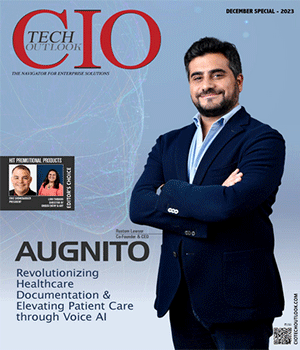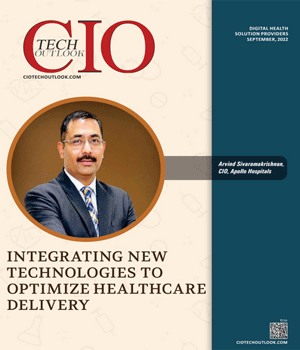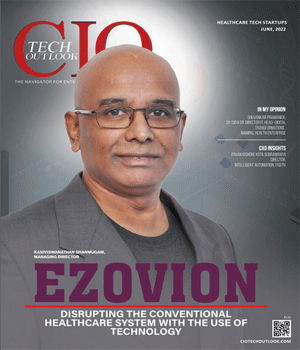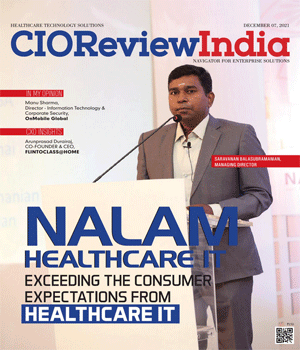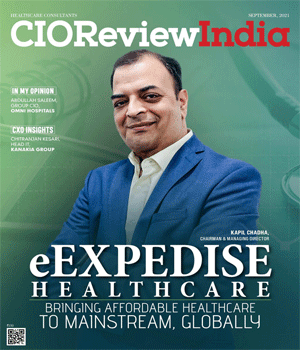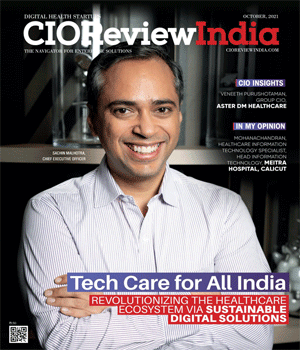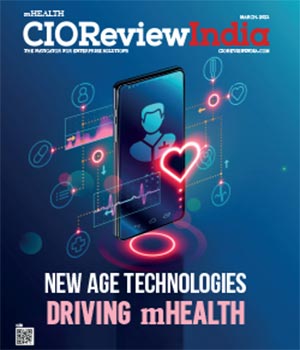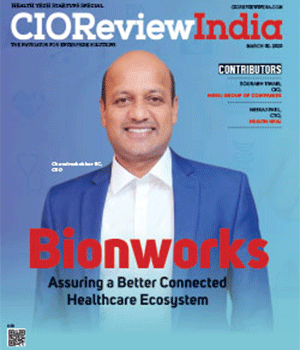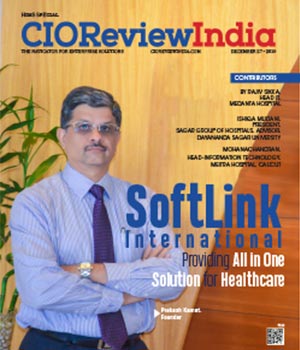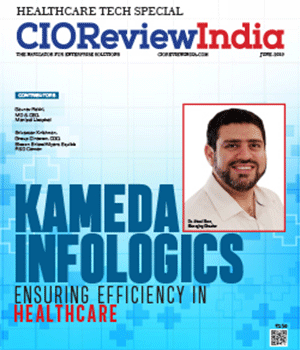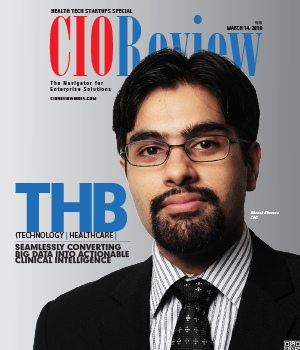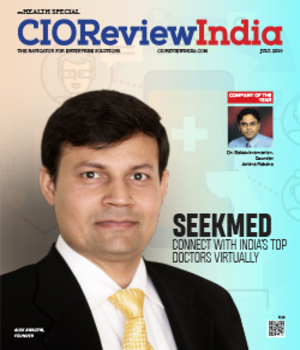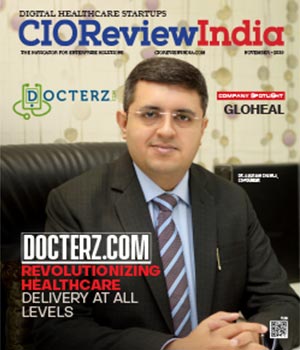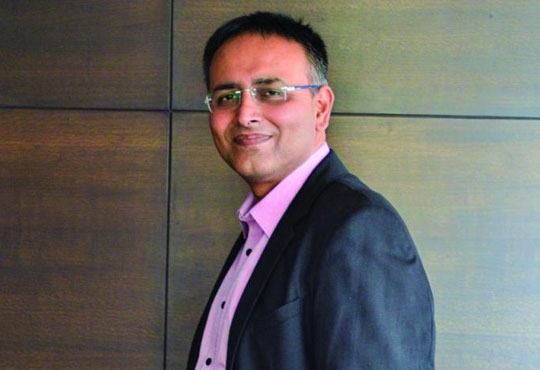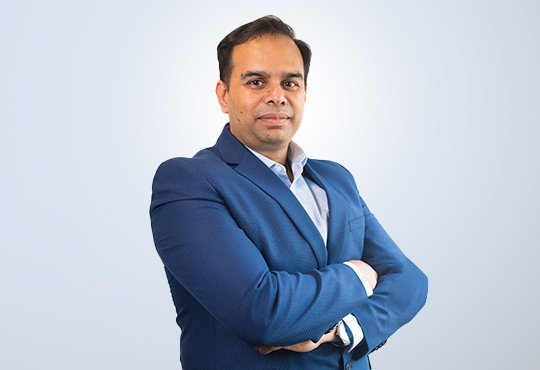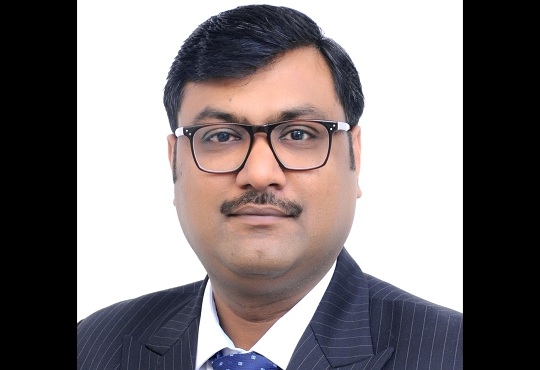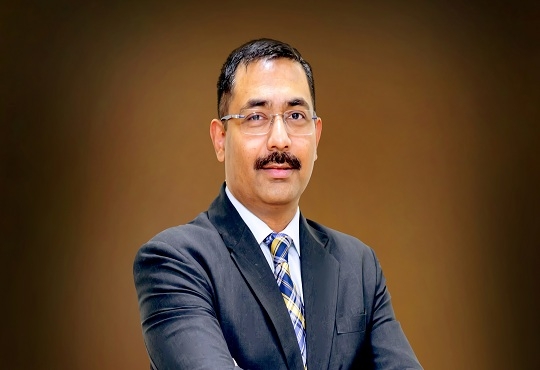
Big Data and IoT in Healthcare
Rajiv Sikka, Head of IT at Medanta - The Medicity Hospital | Thursday, 15 February 2018, 10:42 IST
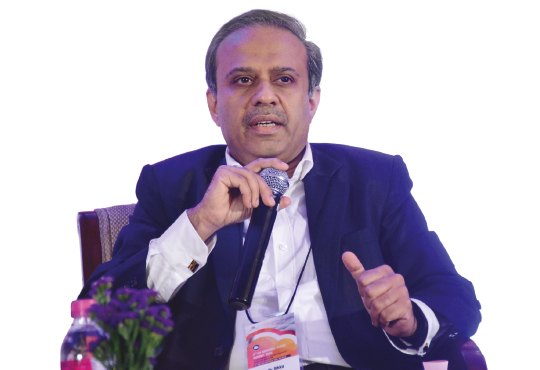 Data is ubiquitous. Every organization stores it one form or another. It has traditionally, been stored in databases and analyzed through queries or SQL. Only recently has there been concerted focus on data and it has been labeled Big Data. What classifies data as big? What is the threshold to Big Data? This Big Data covers anything and everything in any organization; stored intentionally or unintentionally; available in-premise or on cloud; classified as structured or unstructured; present as traditional databases, images, audios, videos, documents or social media feed. Therefore, data is ubiquitous.
Data is ubiquitous. Every organization stores it one form or another. It has traditionally, been stored in databases and analyzed through queries or SQL. Only recently has there been concerted focus on data and it has been labeled Big Data. What classifies data as big? What is the threshold to Big Data? This Big Data covers anything and everything in any organization; stored intentionally or unintentionally; available in-premise or on cloud; classified as structured or unstructured; present as traditional databases, images, audios, videos, documents or social media feed. Therefore, data is ubiquitous.
There is no one set definition. If anything, it is dynamic. It is difficult to nail down any one definition of Big Data since architects and practitioners have used the term differently based on the context. At a very high level, anything which cannot be analyzed using normal spreadsheets and traditional data based queries is BIG DATA. It is used interchangeably as noun: "the data" and as well as a verb: "analysis of data to find meaningful value".
Any data which answers to the following Vs is a potential case of Big Data
• Volume: There are many stats available on the Internet about volume of data generated using various devices, sensors, social media feed etc. but at high level it is a sheer transition from terabytes to zettabytes irrespective of industry, domain or technology used.
• Variety: Heterogeneity of the data mandates different tools for analysis. Data had transitioned from structured to unstructured i.e. from classical databases to documents, images, videos, posts, feeds etc.
• Velocity: In the traditional systems, it was a normal practice to upload data at day end or month end for any processing or post-event analysis. Again, there are many unimaginable stats on the Internet for the speed with which data is generated, stored, processed and analyzed. There are business imperatives for instance analysis of vast data which is driving the transition from offline batch processing to real-time streaming.
Irrespective of industry verticals, enablers of Big Data are many. The foremost amongst these is availability of data itself through Internet connected devices, increased storage capacities, enhanced computing and rich visualization techniques. Because of these enablers, Big Data is being applied to bring insights which otherwise may not be immediately visible or which would be difficult to find using traditional methods.
First let’s understand the need for big data or data analytics in healthcare. There is a progressive emphasis on preventive healthcare, continuous care and overall wellness due to:
• Advancement in medical science & technology (IT & biomedical devices)
• Growing awareness (internet, social media)
• Drift from practitioner centric approach to patient (read customer) centric approach
• Economic affordability
Big Data is applicable in case of healthcare as per the 3V definition:
• Volume: millions of visits of patients yearly in OP, IP, emergency, day care, lab and radiology across various specialties
• Variety: structured, partially structured and unstructured data in the form of EMR, DICOM images & videos, lab reports, biomedical devices, self-reported results, IP monitoring charts, live streaming of surgeries etc.
• Velocity: Biomedical devices generating data which translates to multiple instances in a minute and need to be monitored/processed/analyzed
Human beings by nature are lazy and when it comes to repetitive tasks at high frequency, attention to accuracy is a challenge. With human involvement, it is difficult to gather, process and analyze data in real time and is prone to error. This is a serious handicap for real time analysis, particularly in healthcare where any error is zero tolerance. For intensive critical care it is very essential to monitor and analyze various vital signs (pulse, blood pressure, glucose, oxygen saturation level etc.) almost on per second basis. While we have the capabilities with biomedical devices to capture data accurately, human ability to record and analyze the co-relation between multi-dimension parameters remains a constraint. Therefore, it is very logical to automate by allowing devices to record and display information independently. This is nothing but medical IOT (Internet of Things). There is no dearth of examples on how IOT and Big Data can dramatically improve patient care, heighten efficiencies and reduce costs of delivery. These applications may be in the area of ICU supervision, remote patient monitoring, chronic disease management, predictive surgical outcomes, preventive healthcare etc.
Everything seems so easy in theory - devices will send information using IOT, Big Data will process and present it to doctors who finally will take decisions. But like any evolving technology, implementation of these has challenges:
• Intelligent Analysis: How to extract “Actionable Insights” from data collected by use of IOT which is a function of what information to collate, at what frequency and what models / algorithm must apply. This is the foremost challenge and for this to happen, data scientists and the IT team have to work in conjunction with the medical fraternity.
• Standardization: Standards starting from sensor technologies, network communication protocols, data handling mechanisms need to be addressed by industry bodies.
• Compatibility: There are many stakeholders from community of service providers ranging from hardware, network, software, biomedical devices etc. While standards of various components are still evolving, there is a need to have robust communication between various heterogeneous devices.
• Security: Compared to other cyber security threats, security breaches in connected devices are not yet widely known. There is still a need for comprehensive governance for handling of sensitive and critical clinical data.
These challenges are relevant globally; specific to the India environment is non-availability of even basic EMR in most of the hospitals. With advancement expected in IOT and Big Data management, Medanta believes that the healthcare industry is best suited to leverage it for better patient care at reduced cost.
CIO Viewpoint
Integrating New Technologies to Optimize...
By Abhrasnata Das
Quantum Shift in Healthcare Driven by...
By Abhrasnata Das
Product Adoption: Realizing The Real Value
By Ashish Pandey, CIO, GSK Consumer Healthcare India
CXO Insights
HIT Promotional Products: Fostering Empowerment...
By Eric Shonebarger, President & Lori Thibado, Director of Order Entry & Art
Addressing the Data Management Challenges in...
By Richa Singh
Elevating Patient Experience with Remote...


